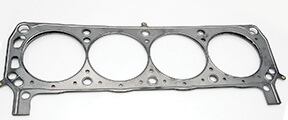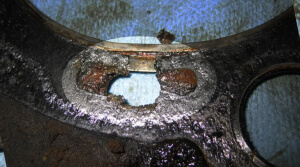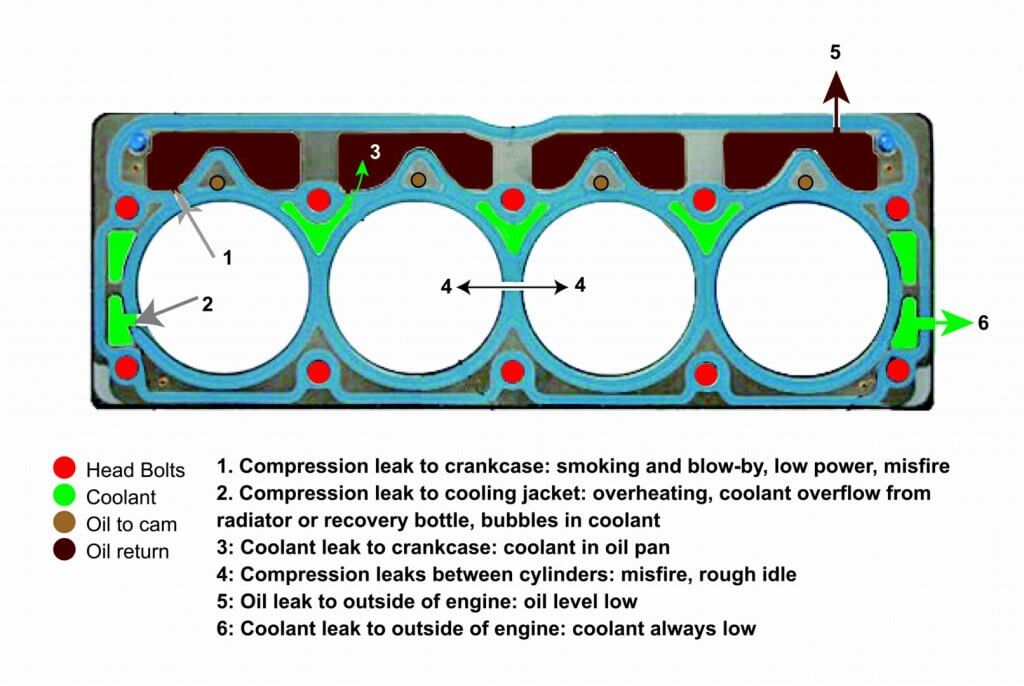What causes head gasket failure
What causes head gasket failure?
Head gasket failure is far more common on late model vehicles with aluminum engine blocks and cylinder heads. A head gasket failure can result in a check engine light caused misfires, loss of coolant, loss of oil, coolant in the oil, coolant overflow at the radiator or recovery bottle, or bubbles in the coolant.
Engine overheating is the #1 cause of head gasket failure
Overheating causes the cylinder head to warp, which causes a space to form between the head gasket, cylinder head and engine block. Once a space open, coolant can flow into the oil, oil can flow into the coolant, and exhaust gasses can flow into the coolant.
1) Engine overheating due to low coolant overheating due to low coolant
Most low coolant issues are causes by cooling system leaks from a leaking radiator, leaking radiator hose or heater hose, leaking heater core, or a leaking coolant reservoir. A symptom of overheating due to low coolant is an engine that runs at normal temperature at highway speeds, but overheats at stop signs. The water spins spins faster at highway speeds and can force the remaining coolant through the radiator and engine. But at slower engine RPMS as idle, it can’t circulate the small amount of coolant, so it overheats.
2) Engine overheating due to radiator fan issues
Most late model vehicles have a multi-speed fan or multiple fans to force just the right amount of air across the radiator to keep the engine at the proper temperature. If the fans aren’t operating properly, you can get overheating, especially at idle when there’s no “ram air” being forced through the engine like you’d find at highway speeds.
3) Overheating due to worn out water pump
Corrosion can erode the impeller in a water pump, causing it to pump less coolant per revolution, resulting in overheating
4) Clogged radiator can cause engine overheating
If you don’t change your coolant on time, corrosion can build up in the system and clog the radiator, preventing it from removing heat from the coolant.
5) Clogged radiator fins can cause overheating
Air has to flow through the radiator fins in order to remove heat. Dust, dirt, bug debris, pollen, cottonwood can build up on the radiator fins and block airflow
6) Overheating due to restricted grille area
Some owners install cardboard in front of their radiator in the winter to increase cabin air temperature and then forget to remove it in summer. Anything that restricts airflow into the radiator will reduce engine cooling.
Worn out coolant is the #2 cause of head gasket failure
Worn out coolant allows corrosion to form and spread around the coolant passages and gasket
The anti-corrosion additives in coolant are critical to preventing cooling system corrosion. When a liquid flows between dissimilar metals it produces electrolysis, the movement of some metal from one surface to another. So the coolant’s anti-corrosion additives are designed to “passivate” the metal surfaces from the antifreeze electrolyte.
When the anti-corrosion additives are depleted, corrosion forms around the engine’s cooling passages. The corrosion spreads, damaging the head gasket as grows until it creates a breach between a cooling passage and an oil passage, or a cooling passage and a combustion cylinder.


Typical head gasket
Detonation and pre-igntion are the #3 causes of head gasket failure
Detonation is caused by using a lower octane fuel than recommended by the carmaker
Detonation is the spontaneous combustion of air fuel pockets in the cylinder that ignite after the spark plug has fired and the piston is in its power stroke. The powerful explosion and extremely high temperatures and pressures created by detonation can burn through pistons, damage piston rods, and distort or melt the head gasket fire ring located above each cylinder.
Pre-ignition is caused mostly by hot carbon deposits in the combustion chamber*
Pre-ignition, on the other hand occurs before the spark plug has fired and is caused most often by hot carbon deposits in the combustion chamber. The air/fuel mixture starts ignition and then the spark plug fires, caused two flame fronts to collide while the piston is still in its compression stroke. The result is extremely high temperatures and pressures that can burn a hole in the piston and damage the fire ring in the head gasket.
*Pre-ignition can also be caused by using a lower octane fuel than recommended by the carmaker. But that usually only happens when low octane fuel is used in very high compression performance engines.
Excessive boost is the 4th most common cause of head gasket failure
A properly operating turbocharger will boost combustion pressures within the acceptable range. However, if the turbo has been modified or is not operating properly, it can produce more boost then the engine was designed to handle. That excessive boost can cause head gasket failure
Performance tuning is the 5th most common cause of head gasket failure
Performance tuning is the alteration of factory programming to increase power by advancing spark timing, boosting air/fuel mixtures and turbocharger boost. In many cases, tuning can also include the deletion of the EGR valve. Any or all of these changes can have a damaging effect on the head gasket by increasing combustion temperatures and pressures beyond design specifications.
See this post for more information on head gasket sealers this post
©, 2015 Rick Muscoplat
Posted on by Rick Muscoplat